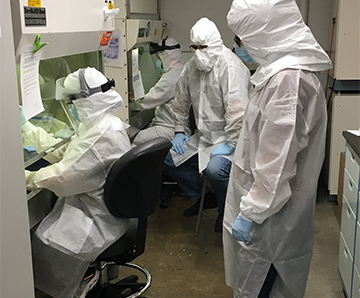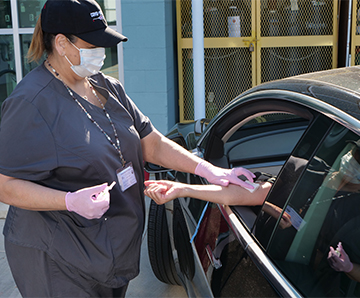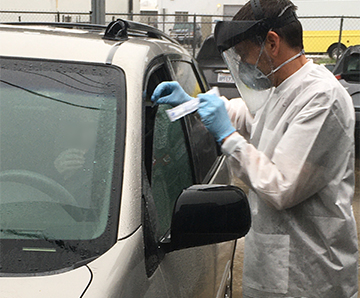As the country trudges forward in the wake of the COVID-19 global health and economic crisis, the Oak Crest Institute of Science (Oak Crest) has taken a hands-on approach to actively curb the spread of the virus in the workplace. To achieve this aim, Oak Crest is conducting a longitudinal clinical study (initiated in March under IRB approval) designed to provide frequent COVID-19 testing (SARS-CoV-2 RNA) for all faculty, employees, students, and their household members in order to characterize the rate of COVID-19 acquisition in the workplace. Such consistent testing consequently empowers Oak Crest to take appropriate precautions to minimize the spread of the virus without sacrificing economic productivity or peace of mind. Results from this study present a prescient report on the importance of diagnostic testing, all while shedding new light on what has persisted as dubious speculation surrounding the infectivity of the virus and the nuances behind the human immune response to it. The study represents a powerful example of how an innovative public health initiative can be dovetailed with scientific discovery.
Testing occurred every Monday, Wednesday, and Friday, starting with sample collection each morning in the Oak Crest parking lot. Subjects self-sampled nasal or oral specimens while maintaining appropriate social distance from within their closed vehicles. Directly following collection, samples underwent RNA extraction and were subsequently analyzed by RT-qPCR for the presence of SARS-CoV-2 RNA. Optional blood samples were collected at baseline and at selected intervals throughout the study to be analyzed via a selective, quantitative ELISA assay for the presence of virus-specific IgG, IgM, and IgA antibodies.
Figure: Study Team Extracting RNA from Specimens.

Out of a total of 54 participants enrolled in the study, two tested positive for COVID-19 in the first 3 months of testing. One subject, who was clinically diagnosed as positive before enrolling in the study, experienced a wide range of symptoms characteristic of the illness. This subject also developed a robust immune response yielding elevated anti-SARS-CoV-2 IgM, IgG, and IgA antibody concentrations in serum samples over 2.5 months from the onset of symptoms. In total, the subject was COVID-19 positive for at least 71 days, one of the longest periods of viral shedding reported to date. Conversely, the other participant to test positive remained asymptomatic for the duration of the infection, which lasted just 14 days by comparison. IgG and IgM antibody concentrations for this subject remained undetectable over several blood collections, while IgA antibodies persisted in serum samples, but deteriorated rapidly over time.
Figure. Phlebotomist Performing Blood Draw for Serology.

Based on multifaceted infection modeling and statistical analysis, it was predicted up to 7 study participants could have become infected by July 7, 2020 in the absence of regular testing. Thus, these results provide critical insight into the value of long-term workplace COVID-19 surveillance as a productive method for preventing large-scale outbreaks and reviving economic output. Beyond this, the study has uncovered vital information regarding SARS-CoV-2 host dynamics, which was made possible by the longitudinal study design.
The study remains ongoing, keeping Oak Crest one of the few “safe zone” environments in a mid-pandemic local and global society. The study continues to take on new aims as data surrounding COVID-19 become better understood, and study models such as this could pave the way for investigations into other infectious diseases that befall the workplace and place our health and safety in jeopardy.

